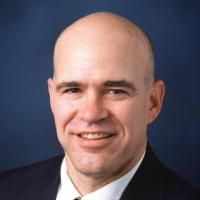Stratigraphic and Earth System approaches to defining the Anthropocene
Date
2016-08-01
Journal Title
Journal ISSN
Volume Title
Repository Usage Stats
views
downloads
Citation Stats
Abstract
© 2016 The Authors. Stratigraphy provides insights into the evolution and dynamics of the Earth System over its long history. With recent developments in Earth System science, changes in Earth System dynamics can now be observed directly and projected into the near future. An integration of the two approaches provides powerful insights into the nature and significance of contemporary changes to Earth. From both perspectives, the Earth has been pushed out of the Holocene Epoch by human activities, with the mid-20th century a strong candidate for the start date of the Anthropocene, the proposed new epoch in Earth history. Here we explore two contrasting scenarios for the future of the Anthropocene, recognizing that the Earth System has already undergone a substantial transition away from the Holocene state. A rapid shift of societies toward the UN Sustainable Development Goals could stabilize the Earth System in a state with more intense interglacial conditions than in the late Quaternary climate regime and with little further biospheric change. In contrast, a continuation of the present Anthropocene trajectory of growing human pressures will likely lead to biotic impoverishment and a much warmer climate with a significant loss of polar ice.
Type
Department
Description
Provenance
Subjects
Citation
Permalink
Published Version (Please cite this version)
Publication Info
Steffen, W, R Leinfelder, J Zalasiewicz, CN Waters, M Williams, C Summerhayes, AD Barnosky, A Cearreta, et al. (2016). Stratigraphic and Earth System approaches to defining the Anthropocene. Earth's Future, 4(8). pp. 324–345. 10.1002/2016EF000379 Retrieved from https://hdl.handle.net/10161/21241.
This is constructed from limited available data and may be imprecise. To cite this article, please review & use the official citation provided by the journal.
Collections
Scholars@Duke

Daniel D. Richter
Richter’s research and teaching links soils with ecosystems and the wider environment, most recently Earth scientists’ Critical Zone. He focuses on how humanity is transforming Earth’s soils from natural to human-natural systems, specifically how land-uses alter soil processes and properties on time scales of decades, centuries, and millennia. Richter's book, Understanding Soil Change (Cambridge University Press), co-authored with his former PhD student Daniel Markewitz (Professor at University of Georgia), explores a legacy of soil change across the Southern Piedmont of North America, from the acidic soils of primary hardwood forests that covered the region until 1800, through the marked transformations affected by long-cultivated cotton, to contemporary soils of rapidly growing and intensively managed pine forests. Richter and colleagues work to expand the concept of soil as the full biogeochemical weathering system of the Earth’s crust, ie, the Earth’s belowground Critical Zone, which can be tens of meters deep. The research examines decadal to millennial changes in the chemistry and cycling of soil C, N, P, Ca, K, Mg, and trace elements B, Fe, Mn, Cu, Be, Zr, and Zn across full soil profiles as deep at 30-m. Since 1988, Richter has worked at and directed the Long-Term Calhoun Soil-Ecosystem Experiment (LTSE) in the Piedmont of South Carolina, a collaborative study with the USDA Forest Service that quantifies how soils form as natural bodies and are transformed by human action, and a study that has grown to become an international model for such long-term soil and ecosystem studies. In 2005, Richter and students initiated the first comprehensive international inventory project of the world’s LTSEs, using an advanced-format website that has networked metadata from 250 LTSEs. The LTSEs project has held three workshops at Duke University, NCSU's Center for Environmental Farming Systems, and the USDA Forest Service's Calhoun Experimental Forest and Coweeta Hydrologic Laboratory, hosting representatives from Africa, Asia, Australia, Europe, and the Americas. Richter's 60-year old Long Term Calhoun Soil and Ecosystem Experiment is linked to similar experiments and platforms around the world via the ‘Long-Term Soil-Ecosystem Experiments Global Inventory’, assembled by Dan Richter, Pete Smith, and Mike Hofmockel."He is an active member of the International Commission on Stratigraphy’s Working Group on the Anthropocene. Richter has written in the peer-reviewed literature about all of these projects, and in November 2014 his soils research at the Calhoun and his soils teaching were featured in Science magazine.
Unless otherwise indicated, scholarly articles published by Duke faculty members are made available here with a CC-BY-NC (Creative Commons Attribution Non-Commercial) license, as enabled by the Duke Open Access Policy. If you wish to use the materials in ways not already permitted under CC-BY-NC, please consult the copyright owner. Other materials are made available here through the author’s grant of a non-exclusive license to make their work openly accessible.
